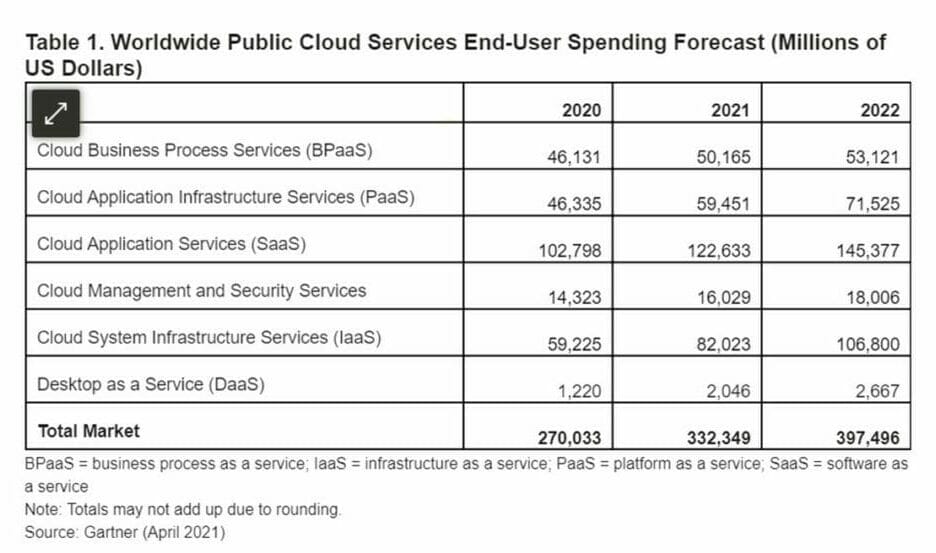Offerings that support or deliver public cloud services are experiencing tremendous spending growth despite macroeconomic impacts, with software as a service (SaaS) remaining the largest market segment, as the demand for composable applications requires a different type of SaaS experience.
SaaS is forecast to reach $122.6 billion in 2021, while infrastructure-as-a-service (IaaS) and desktop-as-a-service (DaaS) will see the highest growth in 2021 (38.5% and 67.7% respectively).
Continued pressures to scale infrastructure that supports moving complex workloads to the cloud and the demands of a hybrid workforce, faced by CIOs, have been touted as key factors in the growth of IaaS and DaaS.
The forecast from Gartner surpassed its previous outlook on end-user public cloud spending, which said the market would grow 18%.
“The events of last year allowed CIOs to overcome any reluctance of moving mission critical workloads from on-premises to the cloud,” said Sid Nag, research vice-president at Gartner.
“Emerging technologies such as containerisation, virtualisation and edge computing are becoming more mainstream and driving additional cloud spending.
“Simply put, the pandemic served as a multiplier for CIOs’ interest in the cloud.”

As organisations mobilise for a massive global effort to produce and distribute Covid-19 vaccinations, SaaS-based applications that enable essential tasks such as automation and supply chain operations are critical.
Such applications have continued to demonstrate reliability in scaling vaccine management, which in turn will help CIOs further validate the ongoing shift to the cloud.
Cyber criminals are targeting the cloud — here’s how to defend against them
Nag continued: “It’s important to note that the usage and adoption of cloud that served enterprises well during the ongoing crisis will not look the same in the coming years.
“It will further evolve from serving pedestrian use cases such as infrastructure and application migration, to those that combine cloud with technologies such as artificial intelligence, the Internet of Things, 5G and more.”







